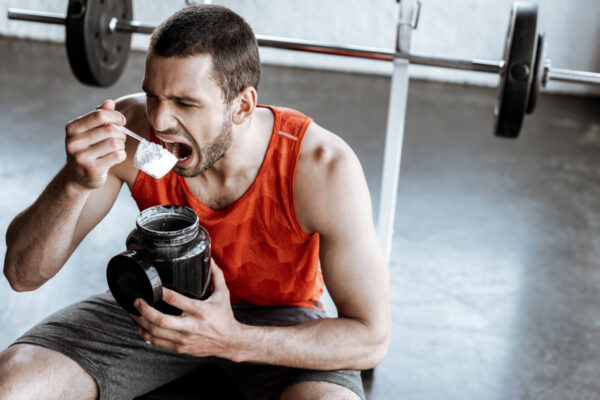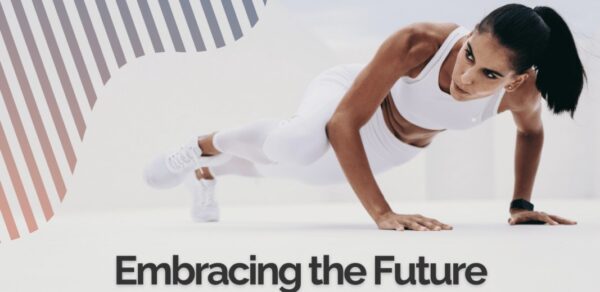
Let’s face it embarking on a “diet” (a word I hate using because of the stigma, I prefer clean or healthy meal plan/planning) journey often means paying close attention to macronutrients—proteins, fats, and carbohydrates—that fuel our bodies. Even seasoned dieters can make common mistakes when it comes to balancing these essential nutrients. Let’s dive into spoon and fork into the most frequent macro mistakes and how to avoid them.
1. Overemphasizing Protein Intake
The Mistake: While protein is crucial for muscle repair and growth, overemphasis on it can lead to neglecting other essential nutrients. Many experienced dieters fall into the trap of consuming too much protein compared to a healthy balance, believing it will lead to greater muscle gain or fat loss.
The Fix: According to the Dietary Guidelines for Americans, the recommended dietary allowance (RDA) for protein is 46 grams per day for women and 56 grams per day for men. Instead of focusing solely on protein, ensure you’re getting a balanced intake of all macronutrients. A good rule of thumb is to distribute your daily calorie intake to about 10-35% protein, 45-65% carbohydrates, and 20-35% fats.
***Personal Tip (1 gram per pound of total bodyweight, or 1 gram per pound of goal bodyweight)
2. Neglecting Carbohydrates
The Mistake: Carbohydrates often get a bad rap in diet culture. Many dieters, even experienced ones, may cut carbs drastically, thinking it will speed up weight loss. However, this can lead to energy slumps and nutrient deficiencies.
The Fix: Carbohydrates are the body’s primary energy source. The Institute of Medicine recommends that 45-65% of your daily calories come from carbohydrates. Focus on consuming complex carbohydrates such as whole grains, vegetables, and fruits, which provide sustained energy and essential nutrients.
3. Ignoring the Importance of Fats
The Mistake: In an effort to reduce calorie intake, some dieters cut out fats almost entirely. This can be detrimental, as fats are essential for hormone production, brain health, and the absorption of fat-soluble vitamins (A, D, E, and K).
The Fix: Healthy fats should comprise 20-35% of your daily calorie intake. Prioritize sources of unsaturated fats such as avocados, nuts, seeds, and olive oil. These not only provide energy but also support overall health and well-being.
4. Misjudging Portion Sizes
The Mistake: Even when focusing on macros, portion control can be a stumbling block. Overestimating portion sizes can lead to consuming more calories than intended, while underestimating can result in nutrient deficiencies.
The Fix: Use measuring tools like cups, spoons, and food scales to accurately gauge portion sizes. Familiarize yourself with visual cues for portion sizes, such as understanding that a serving of protein is roughly the size of a deck of cards.
5. Inadequate Fiber Intake
The Mistake: Fiber often gets overlooked in the quest to balance macros. However, a diet lacking in fiber can lead to digestive issues and suboptimal blood sugar control.
The Fix: The Academy of Nutrition and Dietetics recommends 25 grams of fiber per day for women and 38 grams for men. Incorporate a variety of fiber-rich foods into your diet, such as vegetables, fruits, whole grains, and legumes, to support digestive health and satiety.
6. Failing to Adjust Macros for Activity Levels
The Mistake: Experienced dieters may stick to a fixed macro ratio without considering their activity levels. This can result in inadequate energy intake on active days or excessive intake on rest days.
The Fix: Adjust your macronutrient intake based on your activity level. On more active days, increase your carbohydrate intake to fuel your workouts and aid recovery. Conversely, on rest days, consider slightly reducing your carbohydrate intake while maintaining adequate protein and fat levels.
Conclusion
Even experienced dieters can fall into common macro pitfalls. By ensuring a balanced intake of protein, carbohydrates, and fats, paying attention to portion sizes, and adjusting for activity levels, you can optimize your diet for better health and performance. Remember, a well-rounded diet is key to long-term success and overall well-being.
We Want To Hear From You!
At Optimized Humans, we are committed to providing you with the personalized support and guidance you need to succeed. As your dedicated partner, I will work with you one on one through our innovative app, leveraging cutting-edge technology and my +15 years of expertise as a certified health coach. I am genuinely passionate about helping individuals like yourself unlock their full potential and live their best lives. If you’re ready to take the next step towards a healthier, happier, and more fulfilled you, I would be honored to embark on this journey with you.
Click the link below for our special offer! https://www.trainerize.me/profile/siiib/?planGUID=28a1d9e4193241a59dd3afaa62b54837&mode=checkout
In the realm of fitness trends, some stand the test of time, while others fade into obscurity as mere novelties. One such trend making an unexpected comeback is backwards running. What was once dismissed as a comical spectacle or a quirky joke has evolved into a legitimate and effective fitness practice. In this blog post, we’ll delve into the resurgence of backwards running, exploring its benefits, the science behind it, and why it’s no longer confined to the realm of amusement.
Breaking the Stereotype: Beyond the Laughs
Backwards running, long associated with comedy sketches or eccentric joggers, is shedding its comedic stereotype. Fitness enthusiasts and researchers alike are discovering that this seemingly backward approach to running has unique benefits that challenge the norm.
The Science of Retro Running: Unpacking the Benefits
Contrary to its lighthearted reputation, backwards running, or retro running, engages muscles differently from forward running. It activates the quadriceps, hamstrings, and calves in novel ways, contributing to improved muscle balance and strength. Moreover, retro running is a lower-impact exercise, reducing stress on the knees and joints, making it an appealing choice for individuals with joint concerns.
Coordination and Cognitive Boost
Backwards running isn’t just a physical exercise; it’s a mental challenge too. Navigating your surroundings in reverse requires enhanced coordination and cognitive engagement. This added mental component can contribute to improved spatial awareness, agility, and heightened cognitive function.
Incorporating Variety into Fitness Routines
The fitness landscape is evolving, with individuals seeking novel and engaging ways to stay active. Backwards running provides a refreshing departure from traditional workouts, injecting variety into fitness routines. As people look for unconventional yet effective exercises, retro running has become a standout choice.
Beyond the Gym: A Social Movement
What was once a quirky solo activity has transformed into a social movement. Backwards running clubs and events are emerging, bringing together enthusiasts who appreciate the physical and mental benefits of this unconventional exercise. It’s no longer just a joke; it’s a community-driven fitness movement.
Conclusion: Backwards Running: A Step in the Right Direction
As we witness the resurgence of backwards running, it’s clear that what was once dismissed as a mere joke has transcended its comedic roots. Embracing this unconventional approach to fitness is not about running backward in jest; it’s a deliberate choice driven by a desire for holistic well-being. The benefits, both physical and mental, coupled with the sense of community, are propelling backwards running into the limelight as a legitimate and effective fitness practice. So, lace up those shoes, turn around, and discover the unexpected joys of retro running—a fitness trend that’s no longer running away from serious consideration.

Valentine’s Day is synonymous with indulgent treats and decadent meals, but who says you can’t celebrate love while nourishing your body?
This year, embark on a culinary journey that embraces both romance and well-being with these delightful and healthy recipes. Show your love through delicious, nutrient-packed dishes that will leave both your heart and taste buds content.
Grilled Salmon with Lemon-Dill Sauce
Start your romantic dinner with a heart-healthy choice. Grilled salmon is rich in omega-3 fatty acids, while the zesty lemon-dill sauce adds a burst of flavor. Serve it with a side of quinoa and steamed vegetables for a well-balanced, nutrient-dense meal.
Caprese Stuffed Avocados
Elevate the classic Caprese salad by turning it into a visually stunning and nutrient-packed dish. Stuff ripe avocados with cherry tomatoes, fresh mozzarella, and basil. Drizzle with a balsamic glaze for a taste of indulgence without compromising on health.
Zucchini Noodles with Pesto and Cherry Tomatoes
Embrace the trend of vegetable noodles with this light and flavorful dish. Spiralize zucchini into noodles and toss them with a vibrant pesto sauce. Add cherry tomatoes for a burst of sweetness, creating a low-carb, high-flavor option that’s perfect for a romantic evening.
Balsamic Glazed Chicken with Roasted Vegetables
Impress your loved one with a succulent balsamic glazed chicken accompanied by a medley of roasted vegetables. The balsamic glaze adds a touch of sweetness, while the colorful vegetables provide an array of essential nutrients. It’s a dish that marries taste and health effortlessly.
Chocolate-Dipped Strawberries
No Valentine’s Day is complete without a touch of chocolate. Opt for a healthier dessert by dipping fresh strawberries in dark chocolate. Dark chocolate is rich in antioxidants and, when paired with the juiciness of strawberries, creates a guilt-free indulgence.
Mango Avocado Salsa with Grilled Chicken
Bring a tropical twist to your Valentine’s Day dinner with a refreshing mango avocado salsa. Top grilled chicken with this vibrant salsa for a combination that is not only visually appealing but also a delightful blend of sweet and savory flavors.
Chia Seed Pudding Parfait
End your romantic meal on a healthy note with a chia seed pudding parfait. Layer chia seed pudding with fresh berries and a dollop of Greek yogurt. This dessert is not only delicious but also a great source of fiber and protein.
This Valentine’s Day, treat your loved one to a romantic feast that not only ignites the senses but also nurtures your well-being. These healthy recipes showcase that love can be both delicious and nutritious. Celebrate the joy of good food, good health, and the company of your special someone on this day dedicated to love and connection.

In a world that is constantly evolving, so too are our approaches to fitness. Virtual workouts have emerged as a dynamic force, steadily gaining popularity in recent years, and all signs point to this trend continuing to thrive in 2024. The allure of virtual workouts lies in their convenience, affordability, and personalized nature, offering a revolutionary way to stay fit without the constraints of a traditional gym setting.
Convenience Redefined
One of the primary draws of virtual workouts is the unparalleled convenience they offer. No longer bound by the constraints of time or location, fitness enthusiasts can engage in effective workouts from the comfort of their homes or any location that suits them. The flexibility of virtual workouts caters to busy schedules, making it easier for individuals to seamlessly integrate exercise into their daily routines.
Affordability at its Core
The financial barriers that often accompany traditional gym memberships become a thing of the past with virtual workouts. The affordability of these programs makes fitness accessible to a broader demographic, leveling the playing field and empowering individuals from various walks of life to prioritize their health and well-being without breaking the bank.
Tailored to Individual Needs
Virtual workouts stand out for their ability to be customized to individual needs and preferences. Whether you’re a seasoned fitness enthusiast or a beginner taking your first steps on the wellness journey, virtual workouts provide a diverse range of programs that cater to different fitness levels, goals, and preferences. The ability to tailor workouts ensures that each session is not just effective but also enjoyable, enhancing the overall fitness experience.
The Future of Fitness in 2024
As we look ahead to 2024, the trajectory of virtual workouts appears poised for continued growth and innovation. Technological advancements, coupled with an increasing emphasis on personalized fitness experiences, will likely shape the future of virtual workouts. From interactive live sessions to immersive virtual reality workouts, the possibilities are vast, promising an exciting evolution in how we approach fitness.
Conclusion
Virtual workouts have undeniably become a cornerstone of the modern fitness landscape. With their unmatched convenience, affordability, and personalized approach, they have transformed the way we view and engage in exercise. As we step into 2024, the virtual fitness revolution shows no signs of slowing down, offering a fitness frontier that is inclusive, adaptable, and tailored to the unique needs of each individual.
In this era of virtual fitness, the Optimized Humans Fitness App stands out as a beacon of personalized training excellence. The app, coupled with expert trainers, seamlessly integrates the benefits of virtual workouts with a personalized touch. Through a diverse array of customizable programs, interactive live sessions, and real-time guidance from experienced trainers, the Optimized Humans Fitness App ensures that your fitness journey is not just virtual but uniquely yours. It’s the perfect answer to the evolving landscape of virtual training, where technology and personalization converge to deliver an unparalleled fitness experience. Embrace the future of fitness with the Optimized Humans Fitness App—an innovative solution that brings the gym to you, tailoring workouts to your individual needs and goals, making fitness both effective and enjoyable.
In a world where the pursuit of well-being often revolves around numbers—reps, sets, calories burned—it’s time to redefine our understanding of fitness. Welcome to the era where fitness transcends the mundane and transforms into an immersive experience. This blog explores the paradigm shift towards viewing fitness not just as a routine but as a journey—a holistic, sensorial, and deeply personal experience that goes beyond the confines of the gym.
The Evolution of Fitness: From Routine to Ritual
Gone are the days when fitness was a mere checklist of exercises. The contemporary approach embraces fitness as a ritual—a purposeful and dynamic experience that extends beyond the walls of a gym. It’s about intentional movement, mindful choices, and the integration of well-being into the fabric of daily life.
Mindfulness in Motion: The Present Moment Workout
The concept of mindfulness is seeping into every aspect of our lives, and fitness is no exception. The present moment workout is about immersing oneself fully into the exercise—feeling the muscles engage, savoring each breath, and relishing the rhythm of movement. In this experience-driven fitness journey, mindfulness becomes the guiding force, fostering a deeper connection between the mind and body.
Bridging Fitness and Fun: The Playful Workout
The rise of experiential fitness brings an element of playfulness to the workout routine. From dance-inspired classes to obstacle course challenges, fitness becomes an adventure—an opportunity to play, explore, and rediscover the joy of movement. This shift acknowledges that exercise doesn’t have to be a chore; it can be an exhilarating and enjoyable experience.
The Sensorial Gym Experience: Engaging the Senses
Experiential fitness engages all the senses, creating a sensorial symphony that elevates the workout experience. Whether it’s the aroma of essential oils in a yoga studio, the rhythmic beats of a curated playlist, or the tactile sensation of outdoor trail running, fitness becomes a multisensory journey that enlivens the spirit.
Community Connection: Social Fitness Experiences
Fitness is no longer a solitary pursuit; it’s a communal experience. The emergence of group workouts, fitness events, and online communities fosters a sense of connection and shared purpose. The social aspect of fitness becomes a driving force, transforming it from an individual endeavor into a collective journey.
The Wellness Fusion: Blurring Boundaries
Experiential fitness blurs the boundaries between traditional wellness practices. It’s not just about lifting weights or running miles; it’s about embracing a holistic approach that includes yoga, meditation, and nutritional mindfulness. The fusion of wellness practices creates a comprehensive and integrated experience that nurtures the body, mind, and soul.
Embarking on Your Fitness Odyssey
As we embrace the concept of fitness as an experience, it’s an invitation to embark on a personal odyssey—one that transcends the rigid confines of routine and embraces the dynamic, the mindful, and the joyful. Whether you find solace in the rhythmic flow of a dance class, the serenity of a yoga session, or the camaraderie of a group workout, remember that your fitness journey is uniquely yours. It’s a celebration of movement, an exploration of self, and a holistic experience that extends far beyond the parameters of sets and reps. So, lace up your sneakers, embrace the sensory richness of your workout, and let fitness become a transformative and joyous journey.


